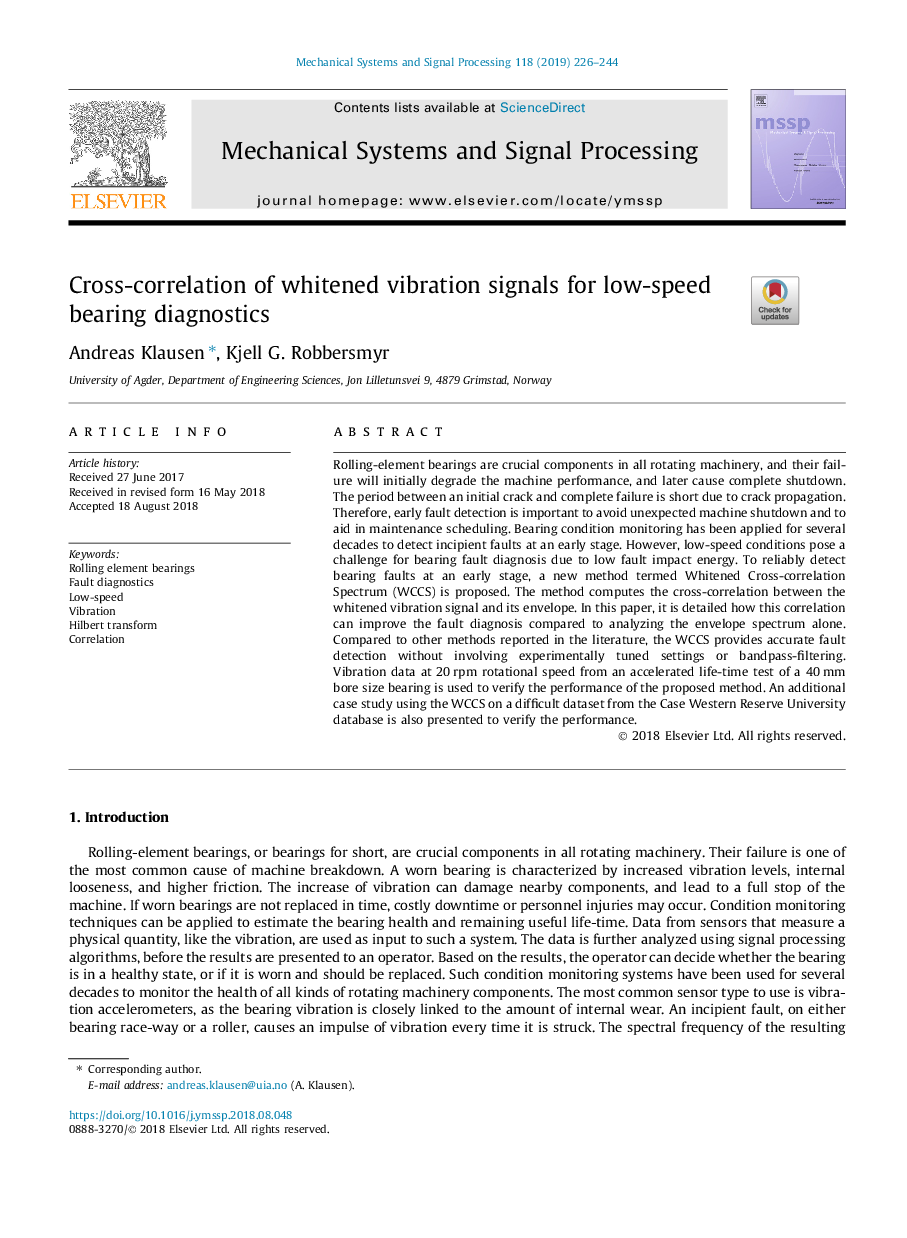| Article ID | Journal | Published Year | Pages | File Type |
|---|---|---|---|---|
| 10132822 | Mechanical Systems and Signal Processing | 2019 | 19 Pages |
Abstract
Rolling-element bearings are crucial components in all rotating machinery, and their failure will initially degrade the machine performance, and later cause complete shutdown. The period between an initial crack and complete failure is short due to crack propagation. Therefore, early fault detection is important to avoid unexpected machine shutdown and to aid in maintenance scheduling. Bearing condition monitoring has been applied for several decades to detect incipient faults at an early stage. However, low-speed conditions pose a challenge for bearing fault diagnosis due to low fault impact energy. To reliably detect bearing faults at an early stage, a new method termed Whitened Cross-correlation Spectrum (WCCS) is proposed. The method computes the cross-correlation between the whitened vibration signal and its envelope. In this paper, it is detailed how this correlation can improve the fault diagnosis compared to analyzing the envelope spectrum alone. Compared to other methods reported in the literature, the WCCS provides accurate fault detection without involving experimentally tuned settings or bandpass-filtering. Vibration data at 20â¯rpm rotational speed from an accelerated life-time test of a 40â¯mm bore size bearing is used to verify the performance of the proposed method. An additional case study using the WCCS on a difficult dataset from the Case Western Reserve University database is also presented to verify the performance.
Related Topics
Physical Sciences and Engineering
Computer Science
Signal Processing
Authors
Andreas Klausen, Kjell G. Robbersmyr,
